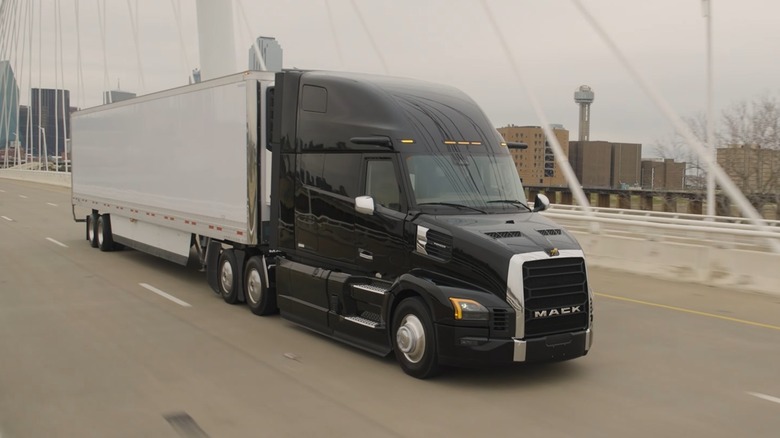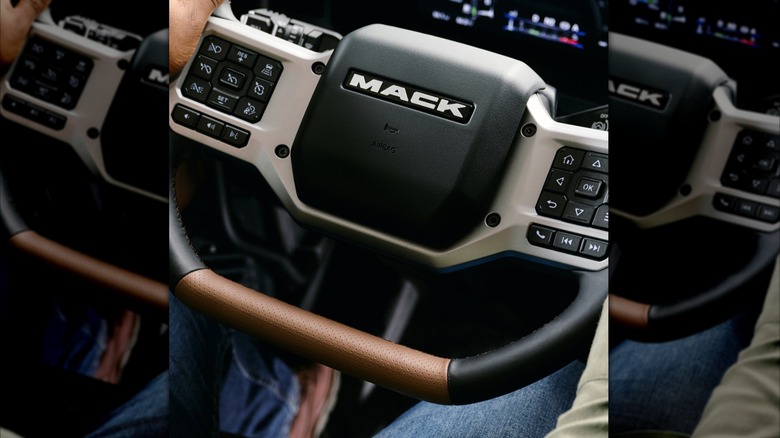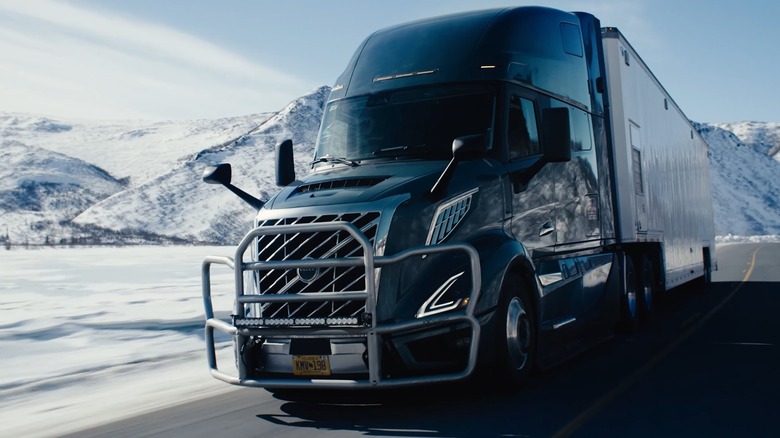Is The Mack Pioneer Just A Rebadged Volvo VNL?
Last month, Mack Trucks pulled the wraps off its first long-haul highway model in nearly a decade, the all-new Mack Pioneer. The big rig has been touted as a major step forward for the brand, blending a modern aerodynamic silhouette with a deep emphasis on driver comfort, efficiency, and cutting-edge technology.
Built for the open road, the Pioneer is offered in day cab as well as multiple sleeper configurations. This includes a 76" high-roof option with Mack's unique FlexSuite for rotating bunks and a convertible dinette. Inside, drivers get access to an exclusive seat system with heating, cooling, and even massage functions, plus a redesigned flat-bottom steering wheel and column-mounted mDrive transmission stalk. It's driver-first all the way.
Underneath, Mack touts up to 11% better fuel efficiency than the current Anthem models, thanks to improved aerodynamics and a refined powertrain. You also get features like adaptive cruise with predictive tech and the Mack Integrated Parking Cooler (a battery-powered sleeper A/C system). But under all this, some are asking how different it really is from the Volvo VNL. After all, the two trucks may look rather similar at first glance.
Built together, but not exactly the same
The Mack Pioneer and the Volvo VNL are indeed close cousins. Both trucks are part of the Volvo Group family and even share powertrain components made side-by-side at the Hagerstown, Maryland, plant. They also share much of the same core mechanical structure, including chassis components, suspension options, and electronics.
Jordan Hunsicker from Mack explains in a recent TFLtalk walkthrough that both brands use the same base engines — with only slight tuning differences. While Volvo's version tops out at 500 horsepower, Mack's high-efficiency variant bumps that to 505. There's also a performance model that reaches 515 horsepower.
That said, Mack didn't just bolt its name on the VNL and call it a day. There are differences beyond that slight bump in power that still help the truck retain its Mack identity, subtle as they may be. For instance, the Pioneer's branded front, with its integrated grille and headlamps, is all unmistakably Mack. The aerodynamics package has also been reworked with a more aggressive windshield angle, lower fenders, and flush roof markers. Moreover, Mack pushed hard on both driver and dealer feedback to build a unique cabin. There are armrests on both sides of the seats, redesigned grab bars, that exclusive flat-bottom steering wheel, and a newly integrated HVAC system setting it apart.
A shared platform doesn't mean a shared identity
Mack Trucks has been around since 1900, but the game changed in 2000 when Volvo Group acquired Mack through its merger with Renault Véhicules Industriels. The move gave Volvo a stronger foothold in North America and added serious muscle to its global portfolio. Today, Mack and Volvo Trucks are both wholly owned subsidiaries of Volvo Group, operating under the same corporate umbrella but chasing different goals.
That corporate link means they share engineering resources, manufacturing plants, and sometimes even suppliers. So, it's no surprise that some of their products can end up with very similar specifications. All told, though, as the distinctions between the Pioneer and VNL indicate, these brands' products feature different experiences. It's much like the relationship between the Ford Expedition and the Lincoln Navigator. They share the same foundation under the hood but are tailored to different audiences in terms of features and feel.
Mack also works hard to ensure its trucks stand apart. Brand identity matters, and Mack leans into its rugged North American legacy, targeting fleets and drivers who prioritize durability, power, and a no-nonsense driving experience. Meanwhile, Volvo Trucks emphasizes global consistency, aerodynamic design, advanced safety features, and ultra-high-efficiency transport. This divergence ensures that even if a part number lines up, the soul of each truck doesn't blur.


